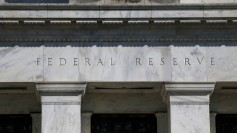Wholesale inflation in the U.S. remained elevated in January, with the Producer Price Index (PPI) rising 0.4% for the month and 3.5% year-over-year, according to data released Thursday by the Bureau of Labor Statistics. The latest figures exceeded economists' expectations and reinforced concerns that inflation remains stubbornly high despite Federal Reserve efforts to stabilize prices.
The increase was driven by rising costs in food, energy, and services, with wholesale egg prices jumping 44% and diesel fuel surging 10.4% from the previous month. The PPI, which tracks price changes at the producer level before they reach consumers, remains at its highest annual rate since February 2023, underscoring inflationary pressures across supply chains.
Economists had forecast a slowdown in producer prices, anticipating a 3.2% annual increase, but the stronger-than-expected data suggests that inflationary pressures may not be easing as quickly as hoped. "Inflation at the producer level remains high, and one concern is that this inflation could ultimately be passed along to consumers," Elizabeth Renter, senior economist at NerdWallet, wrote Thursday.
Core PPI, which excludes the volatile food and energy sectors, showed some moderation, rising 0.3% for the month compared to 0.4% in December. On an annual basis, core inflation eased slightly to 3.6% from 3.7% the previous month. While these figures suggest some cooling in underlying inflation trends, the broader inflation outlook remains uncertain.
The PPI report follows Wednesday's release of the Consumer Price Index (CPI), which also came in hotter than expected, rising 3% year-over-year and marking the fourth consecutive month of inflation gains. The CPI measures retail-level price changes, and analysts see the PPI as a potential leading indicator for future consumer price trends.
Higher prices at the wholesale level are raising concerns about the Federal Reserve's policy stance. The central bank, which had been expected to begin cutting interest rates in 2025, may now face pressure to delay any such moves. "Thursday's stronger-than-expected PPI helps to confirm, especially after Wednesday's hot CPI, that inflation did indeed come roaring back in January, and makes the Federal Reserve's path much clearer, since there is arguably zero reason to cut interest rates right now," Paul Stanley, chief investment officer of Granite Bay Wealth Management, wrote in a commentary.
The latest report also highlights inflationary pressures in specific sectors. Wholesale prices for final demand goods rose 0.6% in January, while final demand services increased 0.3%. Within services, accommodation costs surged 5.7%, accounting for a significant portion of the increase. In the energy sector, rising fuel prices were a key contributor to inflationary pressures, as diesel fuel saw a double-digit price increase.
In recent months, wholesale price inflation had appeared to be cooling, with declines observed through the fall before reversing in November and December. However, January's data suggests that price pressures remain entrenched in certain industries, particularly in commodities and supply-chain-sensitive goods.
The Federal Reserve, which had begun to signal the possibility of interest rate cuts in late 2024, now faces renewed scrutiny over its policy direction. The central bank's September 2024 rate cut of 50 basis points was aimed at fostering economic stability, but with inflation still above its 2% target, policymakers may have to reassess their approach. "We know Fed Chair Powell has said they're moving cautiously with any rate adjustments, and it's become clear this week (if it wasn't already) that the campaign to get inflation down is far from over," Renter said.
Investor sentiment reacted swiftly to the latest inflation data. Following the PPI report, U.S. stock markets experienced volatility, with major indices showing losses as traders recalibrated expectations for future interest rate cuts. The yield on the 10-year Treasury note surged above 4.6%, reflecting concerns that the Fed may keep rates elevated for longer.






